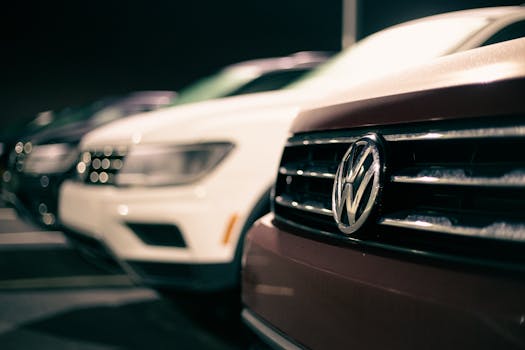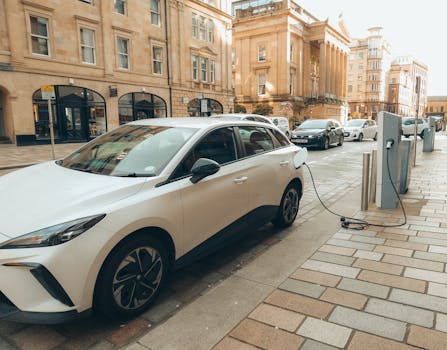Takeaways: The automotive landscape is set to undergo significant transformation by 2025, with advancements in electric vehicles, autonomous driving technology, and innovative design. This article delves into the key trends and features that will define the new cars arriving in 2025, equipping you with the knowledge to make informed decisions in the future automotive market.
The automotive world is rapidly evolving, and as we approach 2025, several key trends and innovations are set to reshape our driving experiences. With the increasing emphasis on sustainability, technological advancements, and consumer preferences, manufacturers are gearing up to introduce groundbreaking vehicles. In this section, we will explore the anticipated changes in the automotive industry, focusing on the rise of electric vehicles (EVs), the integration of advanced technology, and new design philosophies.
Electric vehicles are no longer a niche market. Major automotive manufacturers are committing to producing electric models as part of their broader sustainability goals. By 2025, we expect to see a significant increase in the availability of EVs, with improved battery technology enabling longer ranges and faster charging times. Companies like Tesla, Ford, and General Motors are investing heavily in their electric lineups, ensuring that drivers have a wide range of options.
In addition to EVs, the automotive industry is also focusing on enhancing connectivity and automation within vehicles. Features such as advanced driver-assistance systems (ADAS), vehicle-to-everything (V2X) communication, and enhanced infotainment systems are becoming standard. These technologies not only improve safety but also enhance the overall driving experience, making cars more user-friendly and enjoyable.
Furthermore, the design of new cars is shifting towards more sustainable materials and innovative aesthetics. Manufacturers are increasingly using recycled materials in their car interiors and exteriors, reflecting a commitment to environmental responsibility. The aerodynamic shapes and futuristic designs of these vehicles also reflect a modern approach to automotive engineering.
In summary, the automotive landscape in 2025 will be characterized by a surge in electric vehicles, the integration of advanced technology, and a focus on sustainable design. As consumers become more environmentally conscious and demand better technology, manufacturers are responding with innovative solutions that cater to these needs.
As we look closer to 2025, the competition among automotive manufacturers is heating up. With new entrants into the EV market and established brands expanding their electric offerings, consumers can expect a plethora of choices. This shift is not just about the vehicles themselves; it’s about the ecosystem that supports them, including charging infrastructure and energy sources.
One notable trend is the rise of battery technology innovations. Solid-state batteries are on the horizon, promising to deliver higher energy densities and faster charging capabilities than current lithium-ion batteries. This advancement could revolutionize the electric vehicle market, making EVs more accessible and appealing to a broader audience.
Moreover, the charging infrastructure is evolving. By 2025, we anticipate a significant expansion of fast-charging stations, making it easier for drivers to charge their vehicles on long trips. The integration of renewable energy sources into charging stations will also play a crucial role in reducing the carbon footprint associated with electric vehicle use.
In terms of design, manufacturers are increasingly focusing on user experience. The interiors of new cars will feature smart technology that personalizes the driving experience, from adjustable ambient lighting to customizable infotainment systems. The use of augmented reality (AR) in vehicles is also expected to grow, providing drivers with enhanced navigation and information displays.
Additionally, the shift towards autonomous vehicles is becoming more pronounced. By 2025, we expect to see the introduction of Level 4 autonomous vehicles in select markets, allowing for fully autonomous driving in specific conditions. This advancement will change not only how we drive but also how we think about car ownership and mobility.
In conclusion, as we approach 2025, the automotive industry is on the brink of a revolution. With advancements in battery technology, charging infrastructure, and user experience, consumers will have access to a new generation of vehicles that are not only more efficient but also more enjoyable to drive.
The push for sustainability in automotive manufacturing is more than just a trend; it’s becoming a necessity. As climate change and environmental concerns dominate global discussions, car manufacturers are under pressure to reduce their carbon footprints and offer greener alternatives. By 2025, we will witness a significant shift toward sustainable practices in the automotive industry.
Many companies are committing to carbon neutrality by 2030 or 2040, and this goal is influencing their production methods. From sourcing raw materials responsibly to implementing energy-efficient manufacturing processes, sustainability will be a core principle in the creation of new vehicles. This includes a focus on recycling and reusing materials in vehicle production, which not only conserves resources but also reduces waste.
Furthermore, the shift towards alternative fuel sources is gaining momentum. Hydrogen fuel cell vehicles are expected to make a notable impact by 2025, providing consumers with another eco-friendly option. The development of hydrogen infrastructure will be crucial in supporting this transition, and governments are beginning to invest in this technology.
Another aspect of sustainable driving is vehicle sharing and mobility solutions. As urban areas become more congested, car-sharing services and ride-hailing apps are becoming increasingly popular. By 2025, we expect a rise in the adoption of shared mobility solutions, which not only reduces the number of vehicles on the road but also contributes to lower emissions.
In summary, sustainability will be at the forefront of the automotive industry by 2025. With manufacturers committing to greener practices, exploring alternative fuel sources, and promoting shared mobility solutions, the future of driving looks increasingly eco-friendly.

One major factor influencing consumer behavior is the desire for connectivity. Today’s drivers expect their vehicles to seamlessly integrate with their digital lives. The demand for smart features, such as voice-activated controls, smartphone integration, and over-the-air updates, will continue to rise. By 2025, we can anticipate that the majority of new cars will come equipped with advanced connectivity features, enhancing the overall driving experience.
Moreover, safety is becoming a top priority for consumers. The introduction of advanced driver-assistance systems (ADAS) has raised consumer expectations for safety features. By 2025, features such as automatic emergency braking, lane-keeping assist, and adaptive cruise control will be standard in most new vehicles, giving consumers peace of mind while driving.
In addition, the concept of ownership is evolving. As younger generations enter the market, many are opting for subscription services and shared mobility solutions rather than traditional car ownership. By 2025, we expect to see a rise in flexible ownership models that cater to the needs of modern consumers, allowing them to access vehicles without the long-term commitment of purchasing.
Finally, aesthetics and personalization will play a significant role in consumer choices. With the rise of social media and the desire for individuality, consumers are looking for vehicles that reflect their personal style. By 2025, manufacturers will need to offer a range of customization options, from color choices to interior finishes, to meet the diverse preferences of consumers.
In conclusion, the automotive market in 2025 will be shaped by changing consumer expectations. As connectivity, safety, flexible ownership, and personalization become increasingly important, manufacturers must adapt to these trends to remain competitive in the future.






